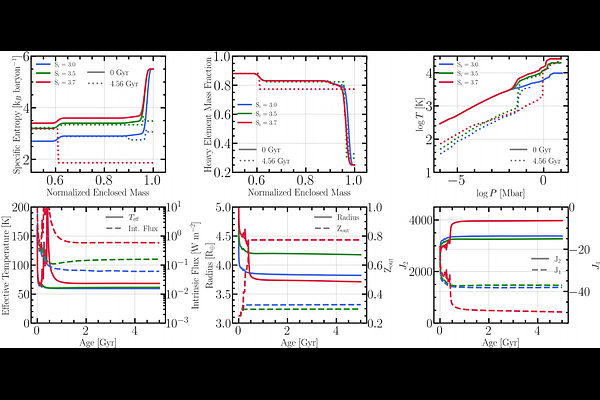Different Inhomogeneous Evolutionary Histories for Uranus and Neptune

Different Inhomogeneous Evolutionary Histories for Uranus and Neptune
Roberto Tejada Arevalo
AbstractWe present updated non-adiabatic and inhomogeneous evolution models for Uranus and Neptune, employing an interior composition of methane, ammonia, water, and rocks. Following formation trends of the gas giants, Uranus and Neptune formation models are applied, where both planets begin with layers stable to convection. Both planets are subject to convective mixing throughout their evolution. Uranus undergoes modest convective mixing, preserving much of its primordial internal heat. In contrast, Neptune's interior undergoes extensive mixing, homogenization, and adiabatic cooling of the outer 40\% of its envelope. The subsequent release of internal energy in Neptune, driven by the convective instability of its primordial outer compositional gradient, accounts for its higher luminosity relative to Uranus. Thus, the observed luminosity differences between Uranus and Neptune could be primarily dictated by the convective stability of their outer envelopes. The extensive convective mixing in Neptune leads to a higher metallicity in its outer region compared to Uranus, a feature seen in atmospheric measurements and shown in past interior models of Neptune. Due to Neptune's more pronounced cooling, our models predict favorable conditions for hydrogen-water immiscibility in its envelope.